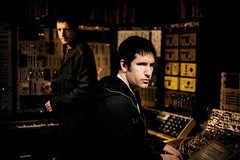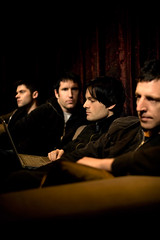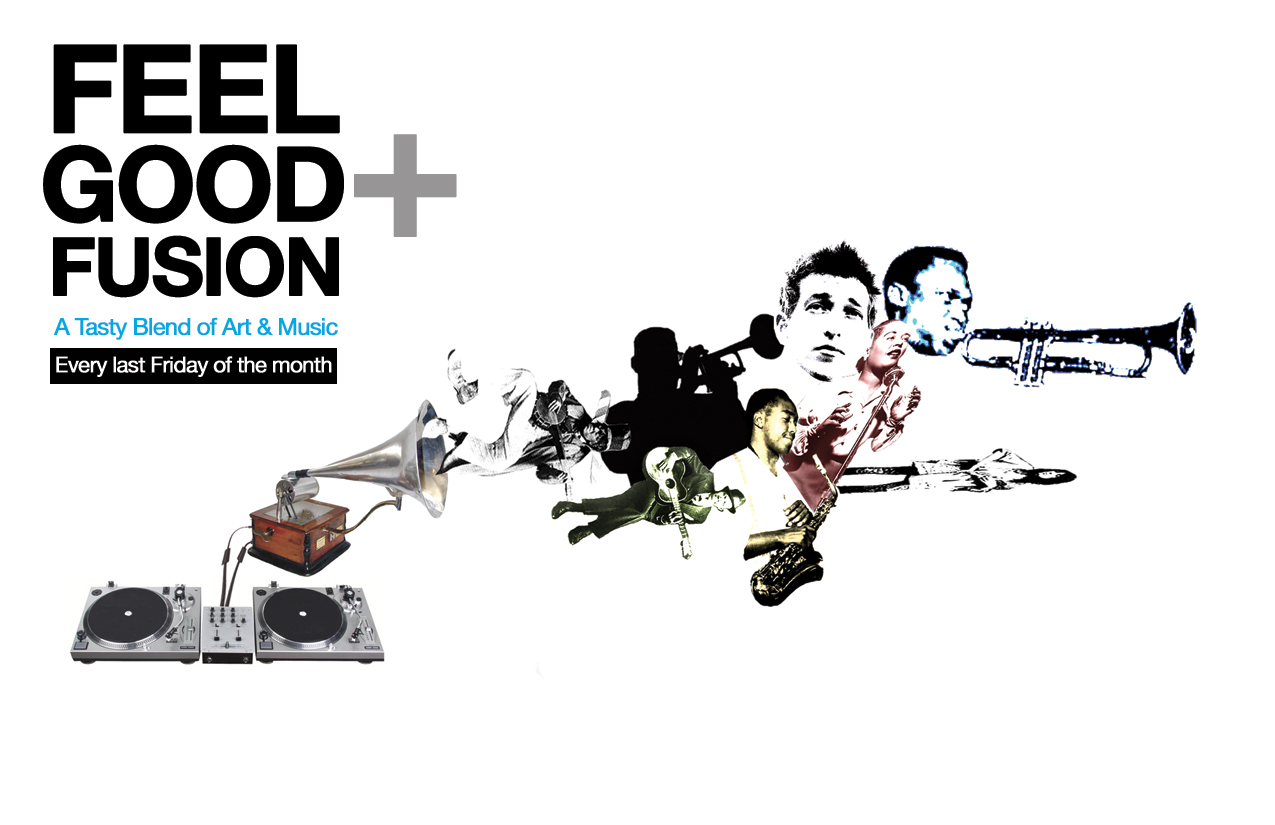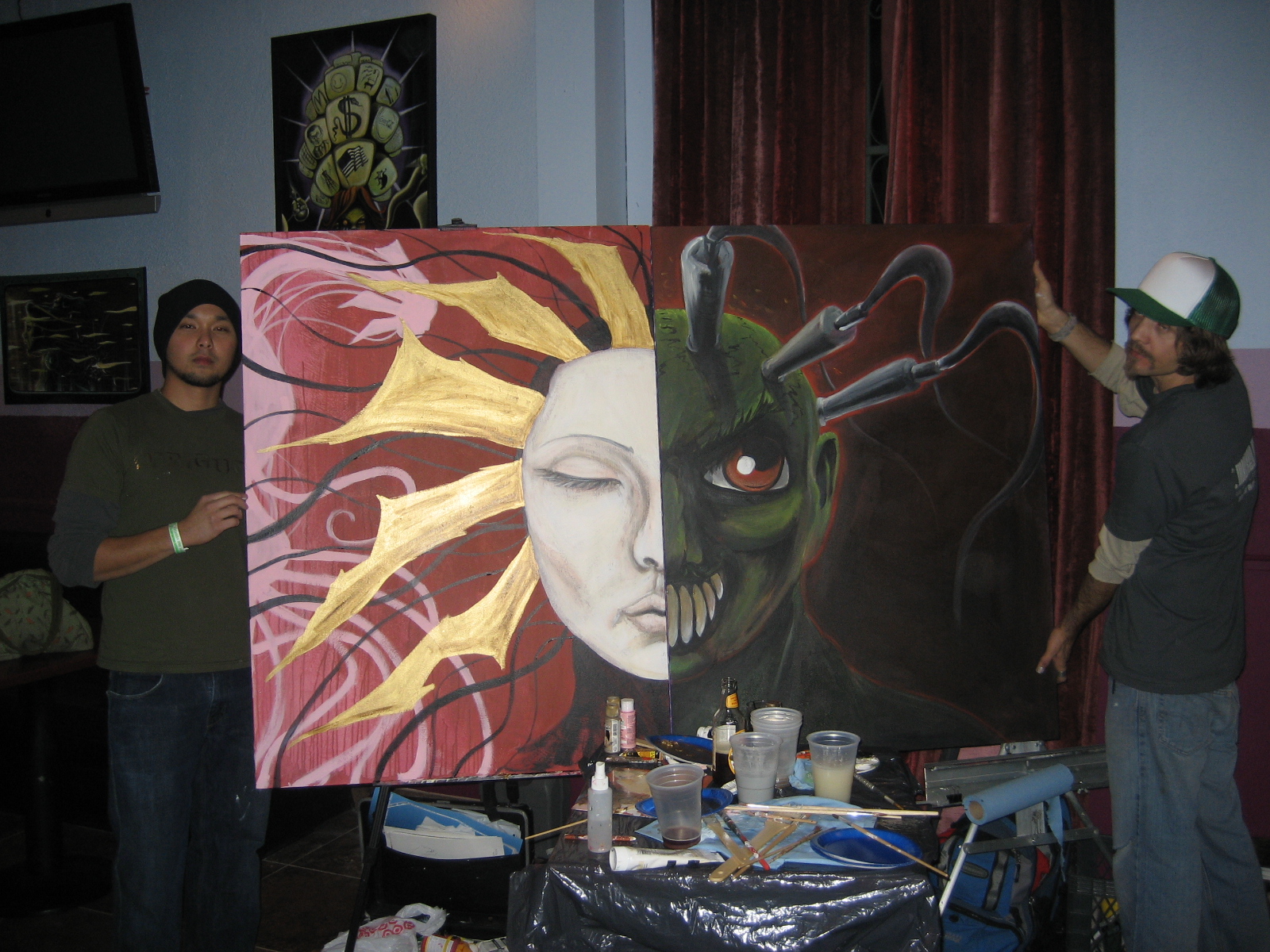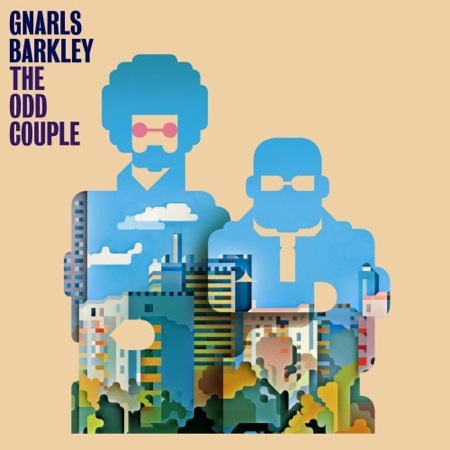 In 2006, St. Elsewhere, an album of collaboration between producer Danger Mouse (The Grey Album, Ghetto Pop Life) and rapper Cee-Lo Green (…is the Soul Machine) dropped and instantaneously brought a variety of new mixmatched sounds to the hip-hop industry. The album covered Funk, Soul, R&B, Hip-Hop, Lounge and Electro in equal parts, never hesitating to throw them together and see what came out. This excellent album was an instant hit and spawned the ridiculously popular “Crazy” which began popping up anywhere you could find music. Following the success of the album, the DJ Sound Advice put his own re-mix spin on the tracks by releasing, for free download, Gnarls Biggie, an album comprised of mash-ups between Gnarls Barkley tracks and Notorious B.I.G. vocal tracks. Yesterday, weeks ahead of the scheduled April release date, St. Elsewhere officially became the freshman offering from Gnarls Barkley as they released their sophomore album, The Odd Couple.
In 2006, St. Elsewhere, an album of collaboration between producer Danger Mouse (The Grey Album, Ghetto Pop Life) and rapper Cee-Lo Green (…is the Soul Machine) dropped and instantaneously brought a variety of new mixmatched sounds to the hip-hop industry. The album covered Funk, Soul, R&B, Hip-Hop, Lounge and Electro in equal parts, never hesitating to throw them together and see what came out. This excellent album was an instant hit and spawned the ridiculously popular “Crazy” which began popping up anywhere you could find music. Following the success of the album, the DJ Sound Advice put his own re-mix spin on the tracks by releasing, for free download, Gnarls Biggie, an album comprised of mash-ups between Gnarls Barkley tracks and Notorious B.I.G. vocal tracks. Yesterday, weeks ahead of the scheduled April release date, St. Elsewhere officially became the freshman offering from Gnarls Barkley as they released their sophomore album, The Odd Couple.
Clocking in at 13 tracks and a brief 39 minutes, The Odd Couple finds Danger and Cee-Lo picking up right where their off-beat and stylistically vibrant and diverse St. Elsewhere left off. “Charity Case” opens the album with the funk baseline and oldies feel made popular by Andre 3000’s “Hey Ya.” The female backing vocals and bell chimes help keep Cee-Lo grounded in the track, and the moving rhythm and hand claps help the head keep nodding. Two days ago, when I watched the season finale of AMC‘s show Breaking Bad, I thought the song they ended the episode to was a fantastic one. It was haunting, mixing a Western and Soul feel with slow and emotionally infused lyrics reminiscent of Bill Withers vocals. Now imagine my surprise when I get to track two and that song turns out to be “Who’s Gonna Save My Soul.”
“Going On” refreshes the upbeat and clap-happy sounds of the first album, bringing about the feeling that a few more “Crazy”-like songs aren’t too far away. Cee-Lo works over organ samples and a beating drum tempo before Danger Mouse turns the last minute into a atmospheric piece of a more sinister nature complete with fuzzed out electronic influence. Track 4 brings out “Run (I’m a Natural Disaster)”, the first single from the album. The single makes it clear that Gnarls is going to try to capitalize on the retro-as-new feeling that made “Crazy” and “Smiley Faces” so popular. The song kicks off with a moving shout and response chorus of sampled children’s voices that breaks up into Cee-Lo’s manically paced lyrics. Once again, Danger’s production skills take over the last minute of the song as he starts mixing more of Cee-Lo’s singing over the party sound he’s created with the clapping and instrumentation.
The raw emotional happiness of “Run” gives way quickly to a much more somber and dark “Would Be Killer.” Here, Cee-Lo moves slowly over a beat laced with background ambient sounds and record slips which help the entire song feel a bit like vinyl being played backwards on an old 45. He fluctuates into higher ranges in certain parts, yet never feels out of place, which continues to be one of the most surprising and reliable portions of his music…even when he takes his vocals to an extreme, it never feels lost or out of place. “Open Book” kicks off with a frenetic and off-syncopated beat complete with bird sounds and strings in the background. The chorus for this song devolves considerably with Cee-Lo’s screaming tone pushed to the background of the music as a more wall of sound approach engulfs the track. Here though, it feels less like the two are having a good time with the music as it does on other tracks, and a bit more forced, as if they’re getting intentionally darker just to see what it feels like. For this reason, it’s a relief when the more playful Barkley re-emerges on “Whatever,” a track that reminds me of the “Liar Liar” remix in the card scene from Lock, Stock and Two Smoking Barrels. The slower beat provides a nice contrast to some of the previous songs, and the use of Cee-Lo as the chorus vocals show that sometimes things can be intentionally ugly and still work musically within a broader tapestry.
“Surprise” finds Cee-Lo lamenting his lack of a soul mate. An acoustic guitar added on this track softens the sound a bit from the all electronic cuts on the album, but it’s a bit disheartening to hear Danger once again fall back onto the hand claps. The hand clap sound is certainly big right now in popular music, but Danger is capable of more, and when he uses it on the majority of tracks on the album, it becomes hard to ignore as a staple of his beats. This constant hand clapping, while used in very different songs for different purposes, still comes off feeling forced at the end, and a bit disappointing that Danger doesn’t mess around with background sounds that could be used to replace the hand clap on certain songs. But the bigger surprise about “Surprise” is when it’s followed by an electronically backed love ballad of sorts in “No Time Soon.” The music for this song sounds like Danger took some influence from Nine Inch Nails as the heavy machinery feel provides the backdrop for a more melodic approach over the top.
“She Knows” finds the duo slowing down a bit with a lo-fi sound that could be the Price is Right theme song on quaaludes. The 70s airy melodies and simple, slower beat take the pace of the album down a notch while providing it with an even more pronounced retro sounds. “Blind Mary” demonstrates the diversity of this tandem. While the majority of the album skips over various genres, the end results are still directly tied to Gnarls Barkley with the style of retro bordering on hip-hop. On “Blind Mary,” the exploration of tampering with genres starts with an almost carnival-like sound before slipping into an easy going, foot tapping Indie Rock exploration. The end result is a lighthearted jaunt where Cee-Lo’s distinct voice and Danger’s cohesive production (featuring, again, unfortunately, more hand clapping) produce a unique sound that could be featured on a variety of radio stations.
“Neighbors” again keeps the tempo slow and features Cee-Lo’s lyrics with a good deal of distortion on the chorus. The easy hip-hop beat, combined with layers of electronic melody and bass funk create an interesting sound, and Danger keeps it together with a variety of vocal samples interlaced. The album comes to a close with “A Little Better,” a song that starts slowly using vinyl pops with a simple bass line and Cee-Lo talking about past moments in his life and his shortcomings. The drop step of the drums on the chorus, combined with a stair-step bass part and Cee-Lo singing in a soulful and at times gospel-like voice create a very easy song to listen to, fading out towards the end with a series of thank yous.
For any fan of St. Elsewhere, I can’t imagine a better follow up attempt by Gnarls Barkley. While it lacks a song that feels to me as unavoidably popular as “Crazy” was, it has some definite hits on it, and you can never tell what kind of radio and club airplay any of these songs will get if they get a remix makeover from some other DJ. Above all though, the album does a fantastic job at never becoming stagnant. Aside from the hand claps, Danger never relies too heavily on any one genre or production style, and Cee-Lo never lets his rap background influence him to a degree that would detract from the rest of his work. Furthermore, with not a single track clocking in over the 4 minute mark, the songs leave you wanting a bit more as opposed to having you looking for the skip track button. For the latest in the MixMatch style and the artful collaboration of artists and genres, look no further than The Odd Couple.
